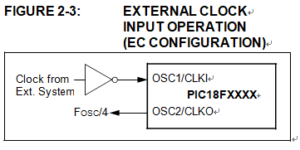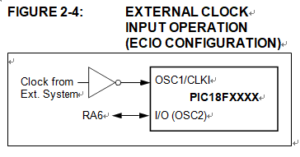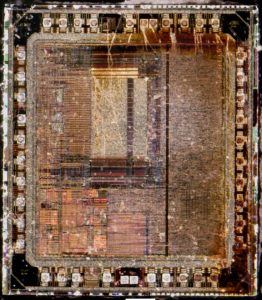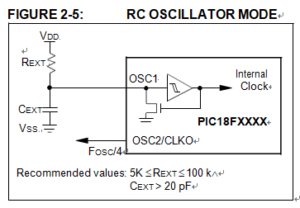 Break PIC18F2450 Microcontroller Locked Heximal
Break PIC18F2450 Microcontroller Locked Heximal
Break PIC18F2450 microcontroller locked heximal is a process start from decrypt secured microprocessor PIC18F2450 fuse bit to recover binary data or heximal file from MICROCHIP PIC18F2450 protective MCU flash program memory and eeprom code memory;
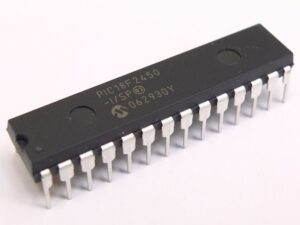
break PIC18F2450 microcontroller locked heximal is a process start from decrypt secured microprocessor PIC18F2450 fuse bit to recover binary data or heximal file from MICROCHIP PIC18F2450 protective MCU flash program memory and eeprom code memory;
The EC and ECIO Oscillator modes require an external clock source to be connected to the OSC1 pin. There is no oscillator start-up time required after a Power-on Reset or after Break PIC18F2450 Microcontroller Locked Heximal. In the EC Oscillator mode, the oscillator frequency divided by 4 is available on the OSC2 pin. This signal may be used for test purposes or to synchronize other logic. Below Figure shows the pin connections for the EC Oscillator mode.
The ECIO Oscillator mode functions like the EC mode, except that the OSC2 pin becomes an additional general purpose I/O pin when Clone IC program. The I/O pin becomes bit 6 of PORTA (RA6). Figure 2-4 shows the pin connections for the ECIO Oscillator mode.

شکستن هگزیمال قفل شده میکروکنترلر PIC18F2450 فرآیندی است که از رمزگشایی ریزپردازنده ایمن بیت فیوز PIC18F2450 برای بازیابی اطلاعات باینری یا فایل هگزیمال از حافظه برنامه فلش محافظ MCU MICROCHIP PIC18F2450 و حافظه کد eeprom شروع می شود.
For timing insensitive applications, the “RC” and “RCIO” device options offer additional cost savings. The actual oscillator frequency is a function of several factors:
- supply voltage
- values of the external resistor (REXT) and capacitor (CEXT)
- operating temperature
Given the same device, operating voltage and temperature and component values, there will also be unit-to-unit frequency variations. These are due to factors such as:
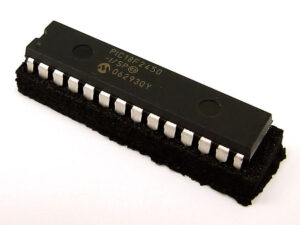
PIC18F2450 माइक्रोकंट्रोलर लॉक हेक्सिमल को तोड़ना एक प्रक्रिया है जो डिक्रिप्ट सुरक्षित माइक्रोप्रोसेसर PIC18F2450 फ्यूज बिट से शुरू होती है, जो माइक्रोचिप PIC18F2450 सुरक्षात्मक MCU फ्लैश प्रोग्राम मेमोरी और ईप्रोम कोड मेमोरी से बाइनरी डेटा या हेक्सिमल फ़ाइल को पुनर्प्राप्त करती है;
- normal manufacturing variation
- difference in lead frame capacitance between package types (especially for low CEXT values)
- variations within the tolerance of limits of REXT and CEXT
In the RC Oscillator mode, the oscillator frequency divided by 4 is available on the OSC2 pin. This signal may be used for test purposes or to synchronize other logic. Figure 2-5 shows how the R/C combination is connected.

Взлом заблокированного шестнадцатеричного кода микроконтроллера PIC18F2450 — это процесс, начинающийся с расшифровки защищенного бита предохранителя микропроцессора PIC18F2450 для восстановления двоичных данных или шестнадцатеричного файла из программной флэш-памяти защитного микроконтроллера MICROCHIP PIC18F2450 и памяти кодов EEPROM;
